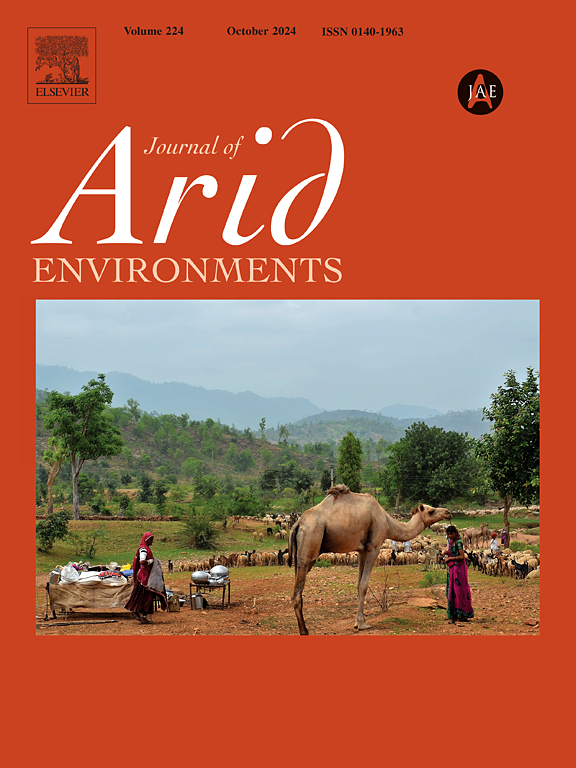农民对药用植物种植的态度和意向:来自伊朗半干旱地区的经验
IF 2.5
3区 环境科学与生态学
Q2 ECOLOGY
引用次数: 0
摘要
在干旱和半干旱地区,特别是在农村社区,相当一部分人口的生计依赖于小规模农业。尽管全球对药用植物(MPs)的需求不断增长,但在伊朗等具有挑战性的环境中,对影响农民采用决定的行为机制知之甚少。本研究通过扩展技术接受模型(TAM)来考察农民对MPs种植的采用行为,并将情境挑战作为外部因素,填补了这一空白。通过结构化问卷收集数据,对伊朗锡斯坦和俾路支斯坦省随机选择的139名农民和所有25名预先确定的具有药用植物专业知识和实地经验的专家进行调查。采用偏最小二乘结构方程模型(PLS-SEM)分析挑战、感知易用性、有用性和采用行为之间的关系。结果显示,虽然农民对MPs的有用性持积极态度(平均得分:3.18/5),但由于种植容易程度低(平均得分:1.77/5),采用受到阻碍。主要挑战包括高生产成本(CV = 0.332排名第一)、缺乏营销基础设施(CV = 0.333)和技术技能差距。关键是,与经典的TAM预测相比,农民的意图更受感知到的易用性(β = 0.520)而不是有用性(β = 0.185)的影响。这突出了在资源稀缺环境中经济潜力与实际可行性之间的脱节。该研究通过证明在低文化水平的农民中,易用性比有用性在农业技术采用中占主导地位,从而为文献做出了贡献;量化基础设施壁垒和技术壁垒对行为意向的中介作用并为政策制定者提供可操作的见解,将技能发展和价值链投资置于纯粹的经济激励之上。本文章由计算机程序翻译,如有差异,请以英文原文为准。
Farmers’ attitude and intention towards medicinal plants cultivation: experiences from semi-arid areas of Iran
The livelihoods of a considerable portion of the population in arid and semi-arid regions, particularly in rural communities, depends on small-scale agriculture. Despite the growing global demand for medicinal plants (MPs), little is known about the behavioral mechanisms influencing farmers' adoption decisions in challenging environments like Iran. This study fills this gap by extending the Technology Acceptance Model (TAM) to examine farmers' adoption behavior of MPs cultivation, incorporating contextual challenges as external factors. Data were collected through structured questionnaires administered to 139 randomly selected farmers and all 25 pre-identified experts with specialized knowledge and field experience in medicinal plants in Sistan and Baluchestan province, Iran. Partial Least Squares Structural Equation Modeling (PLS-SEM) was employed to analyze the relationships between challenges, perceived ease of use, usefulness, and adoption behavior. The results revealed that while farmers had a positive attitude toward MPs' usefulness (mean score: 3.18/5), adoption was hindered by low perceived ease of cultivation (mean: 1.77/5). Key challenges included high production costs (ranked 1st by CV = 0.332), lack of marketing infrastructure (CV = 0.333), and technical skill gaps. Crucially, farmers’ intentions were influenced more by perceived ease (β = 0.520) than usefulness (β = 0.185), contrasting with classic TAM predictions. This highlights a disconnect between economic potential and practical feasibility in resource-scarce settings. The study contributes to the literature by demonstrating the dominance of ease-of-use over usefulness in agricultural technology adoption among low-literacy farmers; quantifying the mediating role of infrastructural and technical barriers on behavioral intentions; and providing actionable insights for policymakers to prioritize skill development and value-chain investments over purely economic incentives.
求助全文
通过发布文献求助,成功后即可免费获取论文全文。
去求助
来源期刊

Journal of Arid Environments
环境科学-环境科学
CiteScore
5.70
自引率
3.70%
发文量
144
审稿时长
55 days
期刊介绍:
The Journal of Arid Environments is an international journal publishing original scientific and technical research articles on physical, biological and cultural aspects of arid, semi-arid, and desert environments. As a forum of multi-disciplinary and interdisciplinary dialogue it addresses research on all aspects of arid environments and their past, present and future use.
 求助内容:
求助内容: 应助结果提醒方式:
应助结果提醒方式:


